Using AI’s full potential for content creation requires a strategic approach. It’s not just about manufacturing content. We want to use the combined powers of human creativity and AI. In this comprehensive guide, I’ll walk you through the top 12 strategies for creating high-quality content with automated solutions so that you’ll thrive as digital content strategies continue to evolve.
Top 12 Strategies for Generating High-Quality AI Content
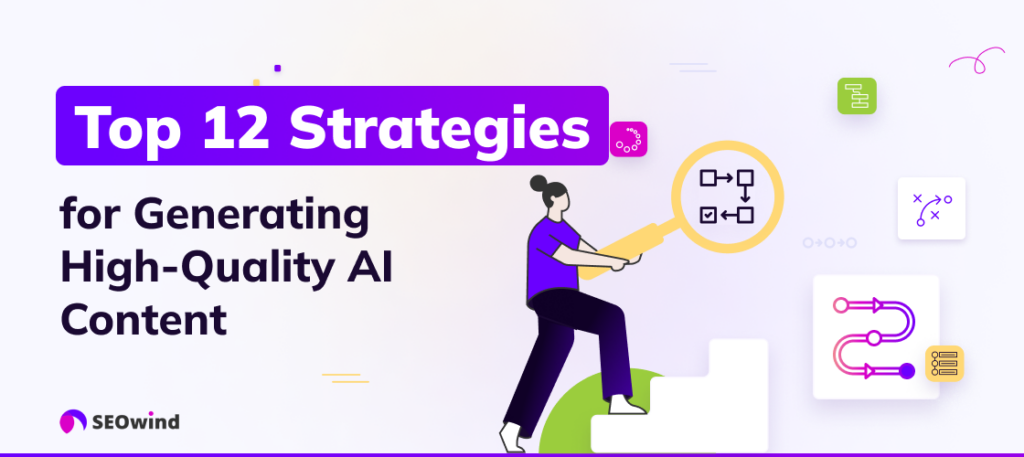
Strategy 1: Use the CyborgMethod™ approach

The key to the true power of AI in content creation is understanding that it’s not about replacing humans but augmenting our abilities. Think of it as a collaboration, a fusion of human ingenuity and AI’s processing power. This is what we call the CyborgMethod™.
But what exactly is this approach? In essence, it’s a framework for maximizing your content creation efforts by strategically integrating AI into every step of the process.
The CyborgMethod™ is about viewing AI as a highly capable teammate. That means understanding its strengths (like rapidly analyzing data and generating text variations) and weaknesses (such as replicating human emotions and experiences). By incorporating AI into each stage, from research and outlining to drafting and optimization, you can leverage its speed and efficiency while infusing every piece of content with your unique voice, creativity, and strategic thinking.
Strategy 2: Feed AI with your keyword and content research

If you’re a chef preparing a gourmet meal, you wouldn’t just toss random ingredients into a pot and hope for the best. You carefully select each ingredient while considering the flavors and textures as well as how they complement each other. Similarly, feeding AI with well-researched keywords and relevant content is crucial.
Start by conducting thorough keyword research and identify the terms your target audience uses to find information. Then, it’s time to review existing content and your competition thoroughly. What’s already ranking well for those keywords? What are the common themes, questions, and formats? Providing AI with this valuable context allows it to generate content that is well-written, relevant, informative, and aligned with user search intent.
Strategy 3: Identify Your Audience’s Needs and Preferences

One of the most significant advantages of using AI for content creation is the ability to personalize at scale. But before you can do so, you need to understand your audience. Who are you trying to reach? What are their pain points, interests, and aspirations? What kind of content resonates with them?
Utilize AI-powered analytics tools to gather insights into your target audience’s demographics, interests, and online behavior. Leverage social listening tools to understand their interests and sentiments around specific topics. These insights will enable you to tailor your content strategy, ensuring that the content your AI generates aligns with what your audience truly wants.
Strategy 4: Incorporate Human Creativity into AI Drafts

Think of AI-generated content as a foundation, a solid starting point upon which to build. While AI can produce impressive drafts, it’s the injection of human creativity that brings written material to life. Review these drafts critically, and be sure to add your unique voice, insights, and personal anecdotes.
The human touch makes your content more engaging and relatable and provides it with the authenticity and emotional depth that only humans can provide. Remember, AI can mimic patterns and generate text, but it’s our unique experiences, perspectives, and storytelling abilities that resonate with readers on an emotional level.
Strategy 5: Craft Engaging and Relevant Content

Have you ever read a piece of content that felt robotic and uninspired? It’s like reading a technical manual: informative, perhaps, but far from engaging. Using AI to create high-quality content that truly resonates with your audience requires you to go beyond just spitting out information. Think of AI as a tool to help you create a captivating story instead of writing the entire narrative for you.
One effective way to make your content more engaging is to incorporate storytelling techniques. Instead of simply stating facts, weave them into a narrative that captures the reader’s attention and evokes emotion. For example, if you’re writing about the benefits of a productivity app, don’t just list its features. Instead, tell a story about how the app helped a real person overcome their inclination to procrastinate and achieve their goals.
Remember those captivating presentations you’ve seen, where speakers effortlessly incorporate humor and ask thought-provoking questions to keep the audience hooked? Infuse those elements into your writing. Injecting humor, where appropriate, makes your content more relatable and memorable. Similarly, posing questions throughout your writing encourages readers to ponder and engage with your ideas on a deeper level.
Strategy 6: Don’t Rely Solely on AI-Generated Content

While AI can be a fantastic tool for content creation, it shouldn’t be the only one in your arsenal. Think of it as a helpful assistant, not the manager of your content strategy. Over-reliance on AI-generated content can lead to several traps that harm your brand’s reputation.
As AI models are trained on massive datasets, there’s always a risk of generating plagiarized content. This could lead to penalties from search engines and damage your credibility. A recent study by HubSpot found that 60% of marketers who use generative AI content are concerned it could harm their brand’s reputation due to bias, plagiarism, and value misalignment. This highlights the importance of not solely relying on AI and always reviewing and editing the output.
While these automated content creation tools can efficiently produce large volumes of material quickly, they lack the nuance and creativity that makes human writing compelling. AI-generated content sometimes misses out on the emotional depth, originality, and understanding of cultural nuances that a human writer naturally brings to the table.
Strategy 7: Tailor AI Tools to Different Content Channels

Do you use the same tone and style of communication when talking to your best friend and your boss? No, it just wouldn’t feel right, would it? The same principle applies to content creation across different channels. Each platform has its own set of best practices and audience expectations, and tailoring your content accordingly is crucial.
AI creation tools can be incredibly helpful in this process. For instance, a tool like Copy.ai is specifically designed to help you create engaging social media posts that align with the fast-paced, visually-driven nature of platforms like Instagram or X. On the other hand, if you’re crafting a long-form blog post, tools like Jasper.ai can assist you in structuring your content effectively and maintaining consistency in tone and style.
Strategy 8: Personalize Content with Your Insights

While AI can do amazing things, it doesn’t possess your unique experiences, perspectives, and understanding of your target audience. Injecting your personality and insights into any content you publish is crucial to making it stand out from the crowd and forging a genuine connection with your readers.
One way to personalize your written material is by incorporating personal experiences and anecdotes. Did a recent event or encounter spark an idea related to the content you’re producing? Weaving such experiences into your writing adds a layer of authenticity and relatability that resonates with readers. It allows them to connect with you on a human level and makes your content more memorable.
Another effective strategy is to infuse your writing with unique opinions and perspectives. Don’t be afraid to take a stance on relevant issues within your niche, even if it means deviating slightly from conventional wisdom. This demonstrates your thought leadership and encourages healthy debate and discussion among your audience. In a sea of content, your unique voice and perspective will captivate the target audience and establish you as a trusted authority.
Strategy 9: Add Internal and External Links

Links act as bridges connecting different pages on your website or even guiding users to other authoritative sources.
For instance, you can link to other relevant articles in your blog to provide more context and encourage readers to explore your site further. Likewise, linking to external sources not only backs up your claims but also shows you’ve done your research, establishing you as a reliable source of information.
Strategy 10: Add Statistics, Data, and Quotes

Do you want to make your content more credible and engaging? Sprinkle in some statistics, data, and relevant quotes! Instead of just mentioning that “AI is transforming content creation,” you can say, “85% of marketers believe generative AI will transform content creation in 2024.” See the difference? It makes your points stronger and leaves a lasting impact on your readers.
Strategy 11: Learn from Your AI as It Learns from You

One of the most fascinating aspects of AI is its ability to learn and adapt. As you use AI content marketing tools and provide feedback, the AI gets better at understanding your style, preferences, and target audience. But it’s a two-way street. Pay attention to how the AI responds to your edits and prompts. If you notice a consistent misunderstanding of a concept or style, it might need some adjustments in the input you’re providing.
Strategy 12: Leverage Editing Tools for Optimal Results

Finally, let’s talk about polishing that AI-generated draft into a masterpiece. Even with AI assistance, never underestimate the importance of human editing. Consider using grammar and style checkers like Grammarly or Hemingway Editor to ensure your content is clear, concise, and error-free. These tools help transform a good article into an exceptional one.
Best AI Content Creation Tools
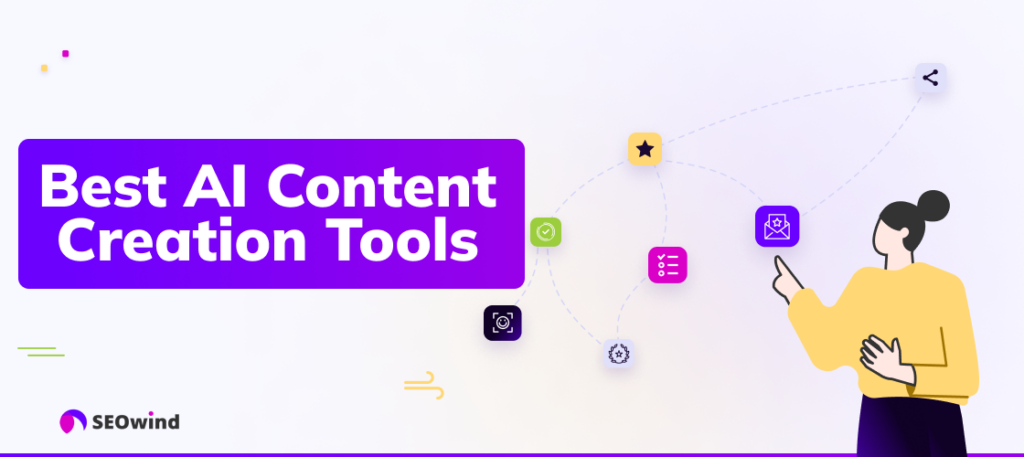
With a plethora of AI content writing tools available, choosing the right one can feel overwhelming. Let’s explore some of the best AI content creation tools available and look at how they can elevate your content game in different areas.
SEOwind – AI Articles Based on Research and Data
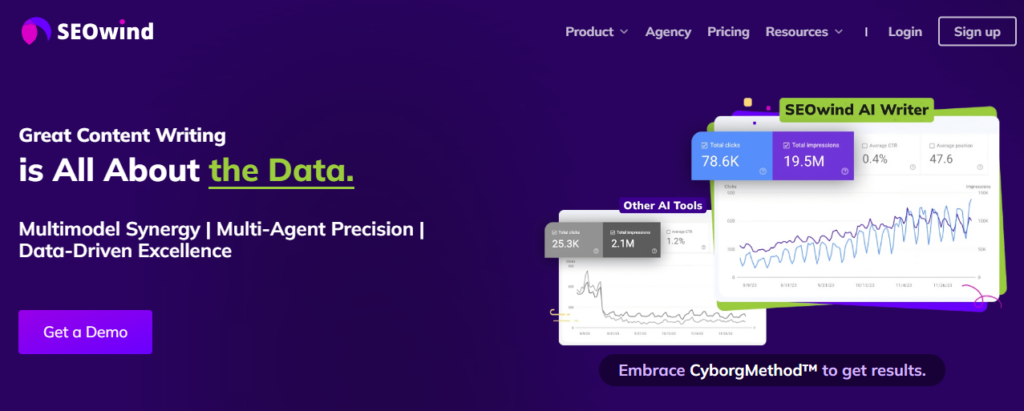
Are you struggling to rank your content? I’ve been there, and SEOwind might be the solution! This powerful AI content creation tool excels at crafting SEO-optimized articles backed by thorough research and data analysis. With SEOwind, you can effortlessly generate informative and engaging articles that rank high on search engine results pages (SERPs). SEOwind takes the guesswork out of SEO, allowing you to focus on what matters most: your content’s message.
Jasper.ai: Best for AI Blog Post Writing
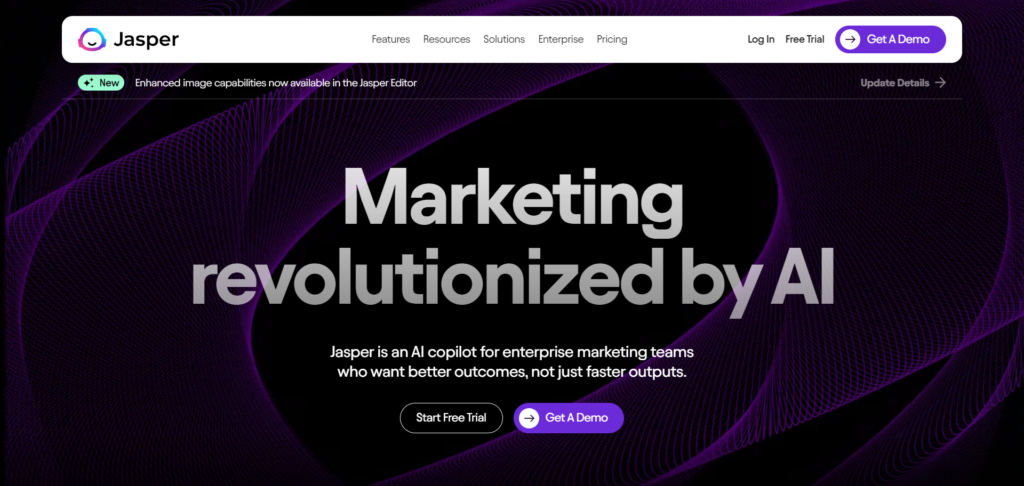
Jasper.ai consistently ranks high among the best AI for social media content creation. This versatile tool goes beyond social media to be a game-changer for crafting compelling blog posts. When you need to whip up engaging and informative blog content, Jasper.ai acts as your virtual writing assistant to help you overcome writer’s block and generate high-quality content that resonates with your audience.
Copy.ai: Best for AI Social Media Copywriting
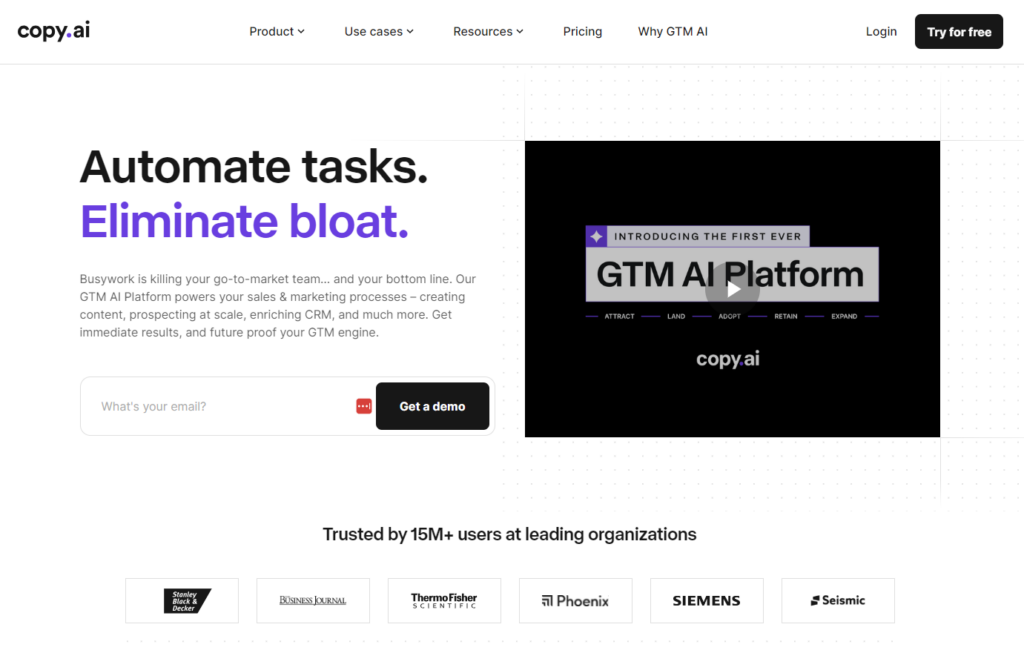
In a world driven by social media, captivating text is crucial. Copy.ai represents the best AI social media content creator, specializing in crafting scroll-stopping social media posts, engaging captions, and persuasive ad copy. Say goodbye to endless hours brainstorming catchy captions, and let Copy.ai handle it while you focus on building meaningful connections.
Canva: Best for AI Image Generation

Are you tired of generic stock photos that fail to capture your brand’s spirit? Canva, known for its user-friendly design interface, now harnesses the power of AI for image generation. Create stunning visuals tailored to your specific requirements, from eye-catching social media graphics to professional presentations. Canva empowers you to elevate your visual content game without needing advanced design skills.
Descript: Best for AI Audio and Video Editing
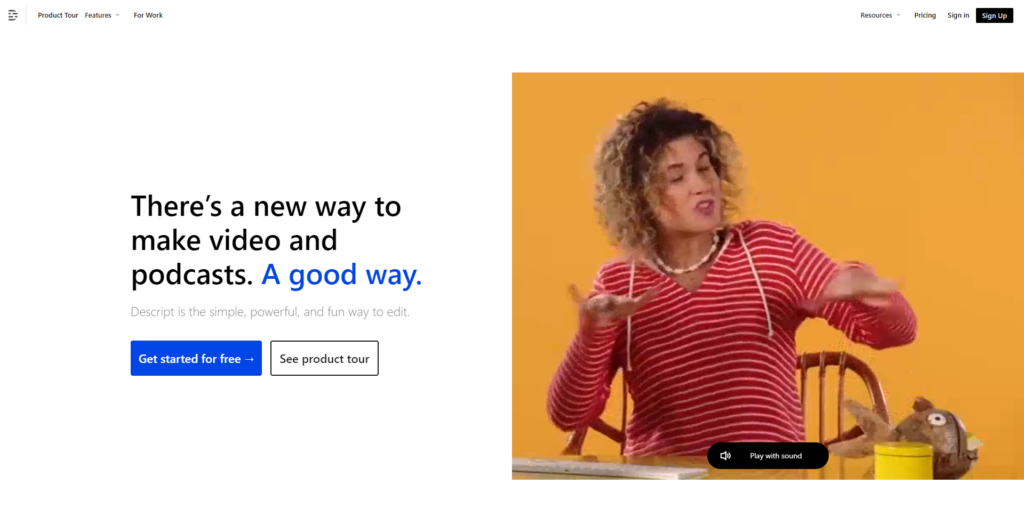
The demand for video and audio content is higher than ever, making sophisticated editing tools essential. Descript simplifies the process with its intuitive AI-powered platform. It lets you effortlessly edit audio and video, transcribe recordings, and even create engaging subtitles, all within a single platform. Descript empowers you to produce professional-quality audio and video content, even as a beginner.
AI-powered tools for social media platforms
Integrating AI tools into your social media strategy can significantly increase your presence on platforms like LinkedIn. By automating routine tasks, providing deep analytical insights, and enabling personalized engagement, AI empowers you to connect with your audience more effectively. One of the examples is Postnitro which helps you create engaging carousels.
The Benefits of Using AI for Content Creation

The emergence of AI content creation tools has caused a significant shift in the way we think about content creation. These tools have evolved into potent resources, providing numerous benefits for content creators. Let’s explore some of the key advantages of integrating AI into your content creation workflow.
Streamlining the Research Process
With AI content creation tools, you can gather information, statistics, and relevant data from countless sources with just a few clicks. These technologies can rapidly sift through massive datasets and online resources to compile comprehensive research reports, saving countless hours of manual effort.
Increasing Efficiency and Productivity
Time is a precious commodity for any content creator. With the assistance of AI, you can streamline various aspects of your content creation process. While the tool handles tasks like generating topic ideas, crafting initial drafts, or even creating social media captions, you have more time to focus on the strategic and creative aspects that require your unique perspective and skillset. This approach significantly boosts efficiency throughout the entire process, allowing you to produce more high-quality content in less time.
Improving SEO and Content Quality
Ranking high in search engine results is crucial for attracting readers to your content. AI content creation tools often come equipped with SEO optimization features, which analyze keywords, suggest relevant topics, and even optimize your content structure for improved search engine visibility. This strategic blend of AI and human oversight ensures the relevance and accuracy of your content while maximizing its ability to reach your target audience.
Cost Savings and Scalability
For businesses and individual content creators alike, AI offers the potential for significant cost savings. A recent study found that 68% of companies noticed a growth in content marketing ROI when leveraging AI. By automating repetitive tasks and streamlining workflows, AI allows you to achieve more with fewer resources. This increased efficiency translates into cost savings that free up your budget for other essential aspects of your business.
Critical Challenges and How to Overcome Them

While AI content creation tools are revolutionizing the way we write, we also have to acknowledge the challenges that come with this technology. Let’s explore some common hurdles and how to overcome them.
Navigating Limited Creativity and Originality Issues
AI content creation tools are fantastic for boosting efficiency, but they don’t have the same creative spark as a human writer. One of the main concerns with AI-powered content creation is the potential lack of creativity and originality. AI often relies on existing data, which can lead to generic-sounding content.
Solution: Feed AI with your insights and ideas
Think of AI as a powerful engine and your insights as the fuel. By providing the AI with your unique perspectives, case studies, and industry knowledge, you can guide it to generate more creative and original content.
Maintaining a Consistent Tone of Voice
A consistent brand voice is essential for building recognition. However, many AI tools struggle to capture your brand’s unique personality, especially if it’s informal or nuanced.
Solution: Feed AI with your brand voice
Train the AI on your brand’s voice. Feed it examples of your previous content, style guides, and even customer interactions. This helps the tool understand the specific language, tone, and style that represent your brand.
If you don’t know how to define your brand voice, our Brand Voice Analyzer GPT might be here to help. Just drop in a sample of your content, and let our smart AI do the heavy lifting, it’ll pinpoint and spell out exactly how your brand communicates.
Discover Your Brand Voice
Paste your content below to get a detailed analysis of your style, voice, and tone.
Lack of relatability and authenticity
Content that resonates with readers often feels personal. Since AI doesn’t have real-world experiences, its output can come across as impersonal or inauthentic.
Solution: Feed AI with your stories and experience
To bridge this gap, infuse your content with personal stories, case studies, and insights that only you can provide. For example, if you’re writing a blog post about customer service, share a specific story of how you went above and beyond for a client.
Addressing Ethical Considerations and Reliability Concerns
It’s important to acknowledge the ethical concerns of AI content creation. For instance, ensuring that the content produced is unbiased and doesn’t perpetuate harmful stereotypes is vital.
Always review and edit AI-generated content to guarantee it aligns with your ethical standards and brand values.
FAQs
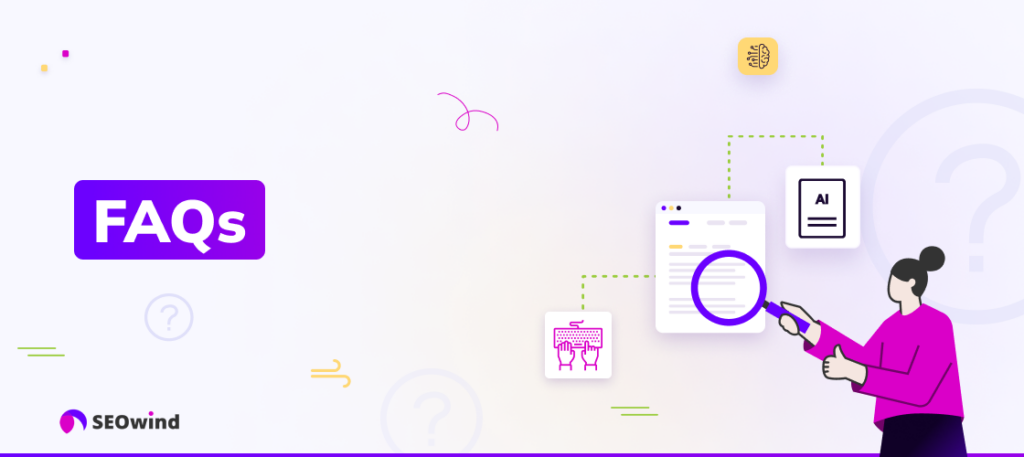
Can AI write good content?
This is the question I get asked the most, and the answer is more nuanced than a simple yes or no. AI, in its current state, can absolutely generate impressive content. Think of it as having a highly efficient intern who can pull together research, suggest different writing styles, and even draft entire sections.
However, just like an intern, the quality of the output depends heavily on the quality of the input. You’ll likely be disappointed if you feed an AI tool vague instructions and expect a masterpiece. But, if you provide clear guidelines, specific examples, and relevant context, AI can be a powerful ally in creating good content.
How can I improve my AI quality?
Improving the quality of your AI-generated content boils down to a few key strategies:
- Provide Crystal-Clear Instructions: Don’t be afraid to get granular. Instead of just asking for a blog post about “coffee,” specify the type of coffee, target audience, and desired tone.
- Curate Your Data Inputs: Remember that AI learns from the data you feed it. If you input poorly written or inaccurate information, the output will reflect that.
- Embrace the Editing Process: AI tools are not a magic bullet; they’re more like advanced assistants. Always review, edit, and refine AI-generated content to ensure it meets your standards.
How are AI tools making content creation quick and efficient?
This is where AI truly shines.
Imagine you’re working on a blog post. Instead of spending hours researching statistics, you can use an AI tool to pull relevant data directly into your draft. Instead of agonizing over the perfect headline, AI can generate a list of catchy options in seconds.
AI can often automate or significantly speed up the time-consuming aspects of content creation. This frees you up to focus on the more strategic and creative elements of content creation, such as developing unique angles, crafting compelling narratives, and injecting your own personality into the text.
In essence, AI is becoming an invaluable tool for streamlining workflows and boosting overall content creation efficiency. In fact, a recent HubSpot study revealed that 77% of marketers believe AI will help them create SEO-friendly content.


